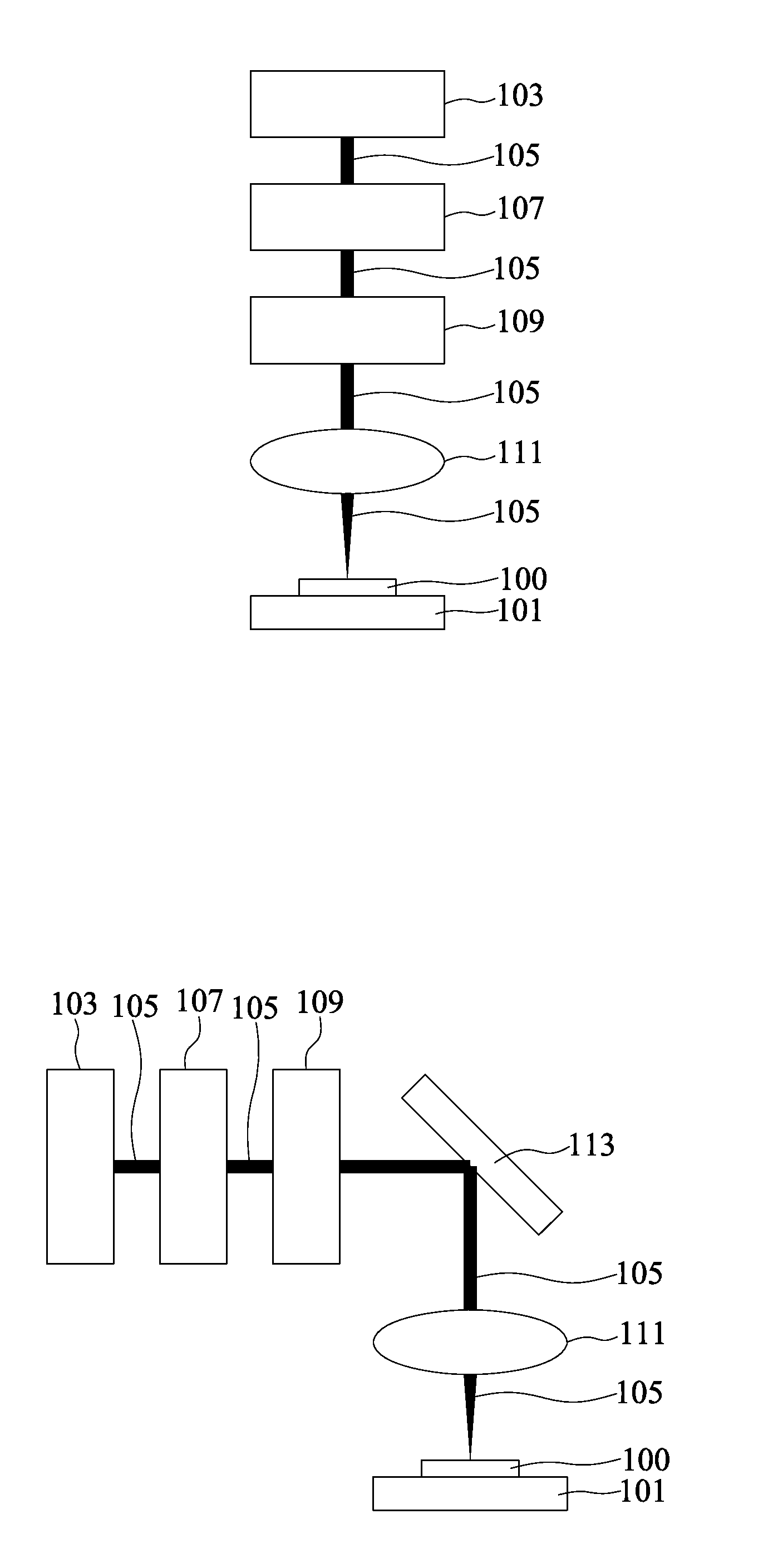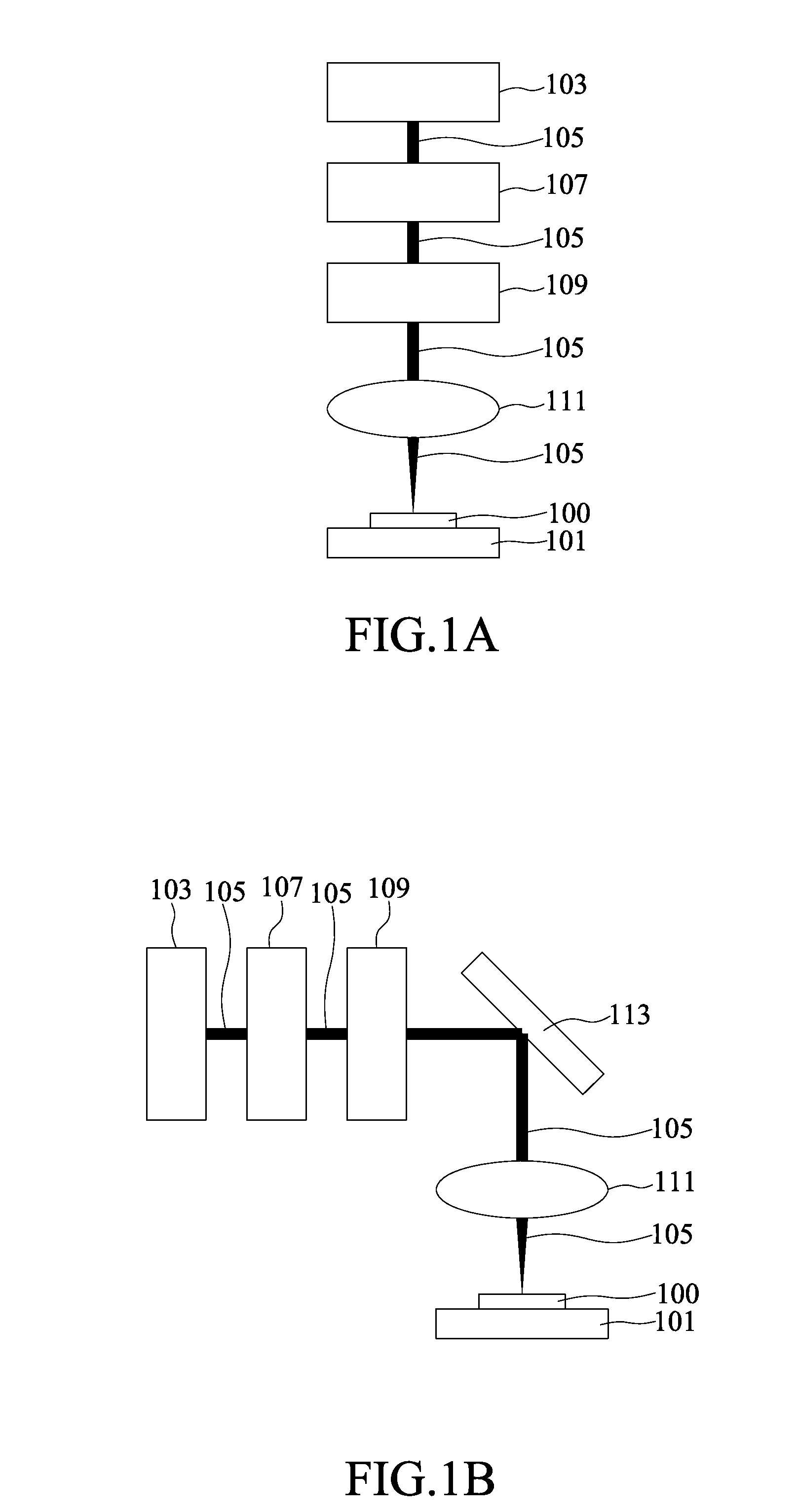Method and system for manufacturing microstructure in photosensitive glass substrate
a technology of photosensitive glass and microstructure, which is applied in the direction of polycrystalline material growth, crystal growth process, chemistry apparatus and processes, etc., can solve the problems of inconvenient use, time-consuming, and insufficient heat treatment of photosensitive glass substrates, so as to reduce steps and time, high alignment precision, and high precision
- Summary
- Abstract
- Description
- Claims
- Application Information
AI Technical Summary
Benefits of technology
Problems solved by technology
Method used
Image
Examples
example 1
Manufacture of Surface Microstructure in Photosensitive Glass Substrate
In this example, the femtosecond laser pulses with a frequency of 1 kHz and energy of 0.2 mW were focused on the surface of a photosensitive glass substrate by a 10× objective lens to modify the surface with a scanning speed of 0.05 mm / s to define a modified region. Then, the second femtosecond laser pulses with a frequency of 80 MHz and energy of 300 mW were focused on the surface of the photosensitive glass substrate by a 50× objective lens and the second focused femtosecond laser pulses scanned the modified region of the photosensitive glass substrate with a speed of 0.5 mm / s for the tempering treatment. Finally, the crystallized region was removed by 8% of hydrofluoric acid accompanied with ultrasonic vibration for 15 minutes.
As shown in FIG. 3A, the position circled by the dotted line A shows that a groove is formed by the method of Example 1. However, as shown in FIG. 3B, if tempering is performed by femtos...
example 2
Manufacture of Blind Via of Photosensitive Glass Substrate
In this example, femtosecond laser pulses with a frequency of 1 kHz and energy of 0.255 mW were focused on the interior of a photosensitive glass substrate by a 10× objective lens for modification, wherein, as shown in FIG. 4, in order to form modified regions of pits 402 at two positions of the surface of the photosensitive glass substrate 400, the femtosecond laser pulses scanned from the surface of the photosensitive glass substrate down to a depth (D) of 0.2 mm at the predetermined two ends of a blind via at a speed less than 0.5 mm / s, such as 0.05 mm / s. The micro-channel 404 connected between the pits 402 of the photosensitive glass substrate was scanned by a speed of 0.5 mm / s to form a U-shaped modified region. Then, the femtosecond laser pulses with a frequency of 80 MHz and energy of 330 mW were focused on the interior of the photosensitive glass substrate by a 50× objective lens and scanned the modified region of the...
PUM
| Property | Measurement | Unit |
|---|---|---|
| Time | aaaaa | aaaaa |
| Power | aaaaa | aaaaa |
| Power | aaaaa | aaaaa |
Abstract
Description
Claims
Application Information
 Login to View More
Login to View More - R&D
- Intellectual Property
- Life Sciences
- Materials
- Tech Scout
- Unparalleled Data Quality
- Higher Quality Content
- 60% Fewer Hallucinations
Browse by: Latest US Patents, China's latest patents, Technical Efficacy Thesaurus, Application Domain, Technology Topic, Popular Technical Reports.
© 2025 PatSnap. All rights reserved.Legal|Privacy policy|Modern Slavery Act Transparency Statement|Sitemap|About US| Contact US: help@patsnap.com



